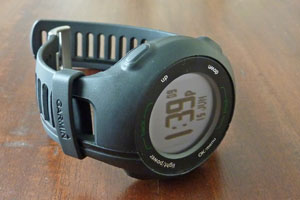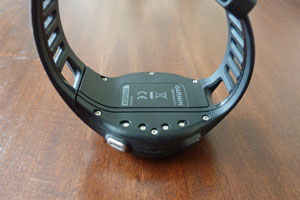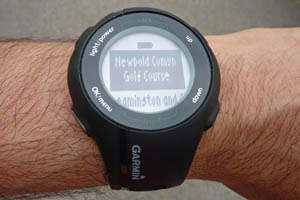Know your distance
Golfing gadgets
Golf is a pastime that polarises opinion. Thought of as either a worthless pursuit or the height of relaxation, bonhomie and leisure, Mark Twain is said to have quipped that 'golf is a good walk spoiled'. Made to look effortless by smooth-swinging professional practitioners such as Rory McIlroy or Luke Donald, golf can, and often is, infuriating for the amateur who's often found hacking their way around the local course on a weekend.
Creating a repeatable, consistent swing is only part of becoming a better golfer. On-course management is also key - knowing exactly where to hit it, to keep out of trouble - and club selection becomes paramount. This is why professional caddies carry paper notebooks that detail specific yardages and any pitfalls on each hole their masters play.
Even for the amateur golfer most courses provide scorecards that list rudimentary information such as hole length, orientation and highlight no-go areas such as ponds and ditches. Closing in on the hole, 150-yard and 100-yard markers - either via posts or discs on the fairway - provide the player with a distance gauge, usually measured out from the centre of the green. However, speaking from personal experience, these markers can be difficult to find and are sometimes notoriously inconsistent, from course to course and even hole to hole. Some courses measure out from the front of the green, some go from the centre and a few, that shall remain nameless, put them at 'best-guess' distances.
Augmenting the scorecard, golfers have previously used mechanical rangefinders to calculate to-pin distances. The rise of the now-ubiquitous Global Positioning System (GPS) means that judging yardages can be undertaken electronically via dedicated devices or through apps on GPS-enabled smartphones.
A championer of standalone GPS devices, Garmin has three products that aim to help golfers of all abilities calculate shot distances and better navigate their rounds. The newest of the bunch is the £170 Approach S1.
More than a watch
The unassuming exterior of the GPS-enabled Approach S1 shows that it can easily pass for an everyday digital watch. Bearing more than a little similarity to the fitness-orientated Forerunner 110, the S1 is sleek and, at 52g, light. Waterproof and comfortable to wear all day long, it's a good fit for the inclement British weather. Four side-mounted buttons control the S1's functions; there's no touchscreen interface, while a backlight ensures the monochrome LCD screen is viewable in all conditions. The strap is wholly integrated into the watch and cannot be user-replaced, though.
A rechargeable lithium-ion battery is good for three weeks of watch usage and, perhaps more importantly, up to eight hours when the GPS is active - long enough to finish 18 holes on hacker-infested, busy courses. Four contact points on the back provide the conduit by which the S1 is charged, and Garmin bundles in a mains- and USB-powered clip that attaches to said points: nice and simple.
Switch the unit on and the current time and date is displayed is set automatically. Click the bottom-left button, select 'start round' and the S1 grabs on to the signal from available satellites. Like most modern receivers, the lock-on period - time for the GPS to become active and usable - ranges between 30-60 seconds, though it can be more in overcast, covered conditions. It's best to activate the S1 when setting up your clubs and trolley, then.
Garmin's website has a comprehensive list of mapped courses - over 5,000 in Europe - so the chances are your local course will be covered, If not, Garmin has free-to-download updates and an online golf course report form where changes and additions can be requested. As GPS technology is free to use there are no post-purchase charges. Working in Leamington Spa, Warwickshire, the S1 picked up 10 courses within a 10-mile radius from the office.
Frequent fliers need to note that the European version is limited to, well, European courses; you won't be able to tap into U.S. courses should you happen to tee-up in San Francisco. Garmin's North American model has those courses covered, naturally.













